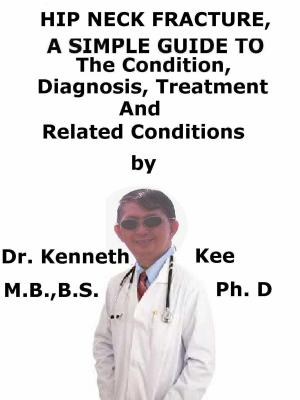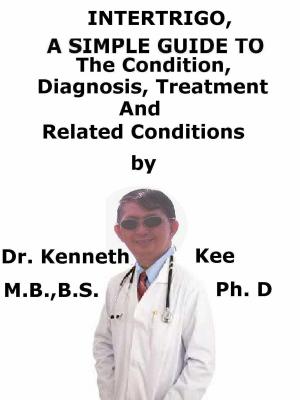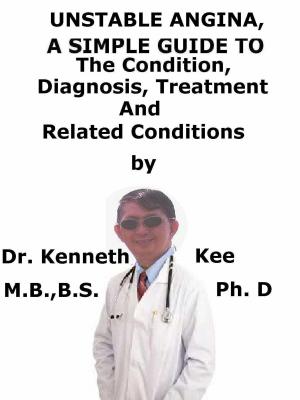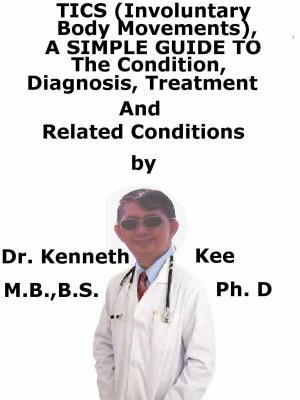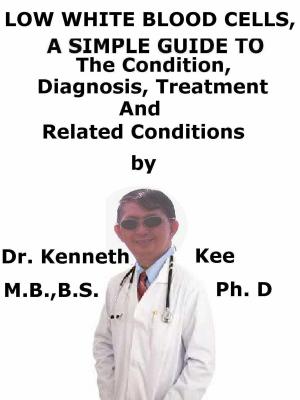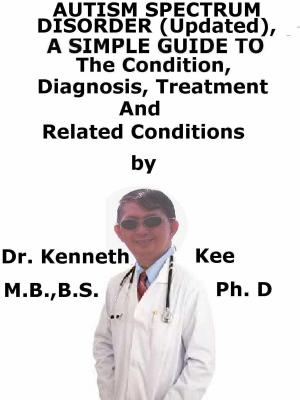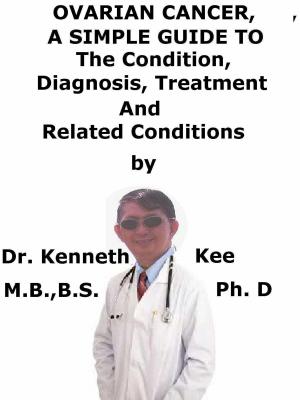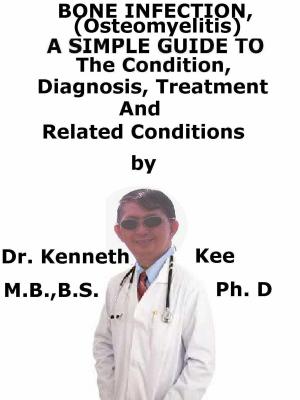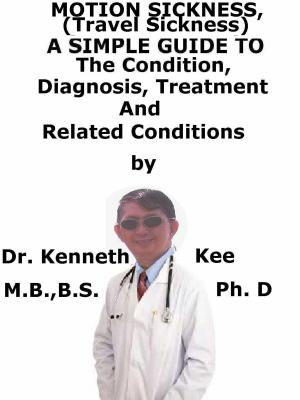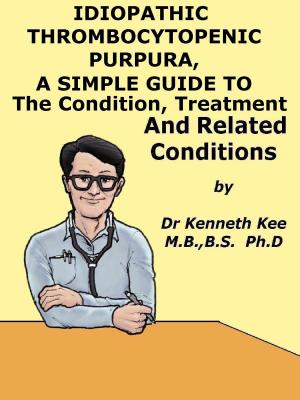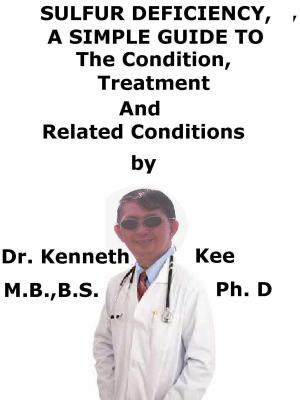Meniere’s Disease, A Simple Guide To The Condition, Diagnosis, Treatment And Related Conditions
Nonfiction, Health & Well Being, Medical, Specialties, Otorhinolaryngology, Health, Ailments & Diseases, Nervous System & the Brain| Author: | Kenneth Kee | ISBN: | 9780463953181 |
| Publisher: | Kenneth Kee | Publication: | June 9, 2018 |
| Imprint: | Smashwords Edition | Language: | English |
| Author: | Kenneth Kee |
| ISBN: | 9780463953181 |
| Publisher: | Kenneth Kee |
| Publication: | June 9, 2018 |
| Imprint: | Smashwords Edition |
| Language: | English |
This book describes Meniere’s Disease, Diagnosis and Treatment and Related Diseases
Meniere's Disease is a disease of the inner ear which is characterized by the triad of episodic vertigo (giddiness), tinnitus (buzzing sound in ear) and progressive hearing loss.
It is more common in adults between 30-60years of age and in men more than women.
It usually occurs in one ear.
No one knows the exact cause of Meniere's Disease.
It is believed to be due to distension of the membranous labyrinth with increased pressure and fluid in the endolymph of the inner ear.
The possible triggers of this condition may be:
-
Middle ear infection,
-
Head injury
-
Upper respiratory tract infection
-
The effect of aspirin,
-
Smoking
-
Alcohol
-
Caffeine
-
Salt
Symptoms:
The classical triad of symptoms is:
- Recurrent bouts of vertigo of varying degrees which may last from hours to days.
Recurrences may be as often as 1 week to several years.
-
Slow progressive loss of hearing in one ear or rarely in both ears starting at low pitch sounds first.
-
Unilateral tinnitus (buzzing sound in one ear), sometimes in both ears
Diagnosis is by:
Audiometry shows impairment of hearing
MRI scan of the head - to exclude a tumor of the eighth cranial nerve (vestibulocochlear nerve)
Initial treatment:
1.Acute attacks are treated symptomatically with injections of stemetil, maxolon, dimenhydrinate
Other treatments:
-
Oral stemetil, maxolon, dimenhydrinate
-
Mild diuretic
-
Vitamin B6
-
Antihistamines,
-
Anticholinergics,
-
Corticosteroids orally or injection of steroid medication behind the eardrum
-
Bed rest
-
Stress reduction.
-
Low-sodium diet.
-
Avoid caffeine, alcohol and cigarettes
Surgery:
Surgery is only required if the above treatment does not control the vertigo
-
Decompression of the endolymphatic sac may help to relieve symptoms.
-
Permanent surgical destruction of the balance part of one ear may be done where the disease is severe and affects one ear.
a. Chemical labyrinthectomy: a drug (such as gentamicin) that can cause destruction of the balance portion of the inner ear is injected into the middle ear.
b. Vestibular neurectomy where section of the nerve to the balance portion of the inner ear is done surgically
c. Surgical removal of the inner ear (labyrinthectomy).
TABLE OF CONTENT
Introduction
Chapter 1 Meniere’s Disease
Chapter 2 Causes
Chapter 3 Symptoms
Chapter 4 Diagnosis
Chapter 5 Treatment
Chapter 6 Prognosis
Chapter 7 Vertigo
Chapter 8 Tinnitus
Epilogue
This book describes Meniere’s Disease, Diagnosis and Treatment and Related Diseases
Meniere's Disease is a disease of the inner ear which is characterized by the triad of episodic vertigo (giddiness), tinnitus (buzzing sound in ear) and progressive hearing loss.
It is more common in adults between 30-60years of age and in men more than women.
It usually occurs in one ear.
No one knows the exact cause of Meniere's Disease.
It is believed to be due to distension of the membranous labyrinth with increased pressure and fluid in the endolymph of the inner ear.
The possible triggers of this condition may be:
-
Middle ear infection,
-
Head injury
-
Upper respiratory tract infection
-
The effect of aspirin,
-
Smoking
-
Alcohol
-
Caffeine
-
Salt
Symptoms:
The classical triad of symptoms is:
- Recurrent bouts of vertigo of varying degrees which may last from hours to days.
Recurrences may be as often as 1 week to several years.
-
Slow progressive loss of hearing in one ear or rarely in both ears starting at low pitch sounds first.
-
Unilateral tinnitus (buzzing sound in one ear), sometimes in both ears
Diagnosis is by:
Audiometry shows impairment of hearing
MRI scan of the head - to exclude a tumor of the eighth cranial nerve (vestibulocochlear nerve)
Initial treatment:
1.Acute attacks are treated symptomatically with injections of stemetil, maxolon, dimenhydrinate
Other treatments:
-
Oral stemetil, maxolon, dimenhydrinate
-
Mild diuretic
-
Vitamin B6
-
Antihistamines,
-
Anticholinergics,
-
Corticosteroids orally or injection of steroid medication behind the eardrum
-
Bed rest
-
Stress reduction.
-
Low-sodium diet.
-
Avoid caffeine, alcohol and cigarettes
Surgery:
Surgery is only required if the above treatment does not control the vertigo
-
Decompression of the endolymphatic sac may help to relieve symptoms.
-
Permanent surgical destruction of the balance part of one ear may be done where the disease is severe and affects one ear.
a. Chemical labyrinthectomy: a drug (such as gentamicin) that can cause destruction of the balance portion of the inner ear is injected into the middle ear.
b. Vestibular neurectomy where section of the nerve to the balance portion of the inner ear is done surgically
c. Surgical removal of the inner ear (labyrinthectomy).
TABLE OF CONTENT
Introduction
Chapter 1 Meniere’s Disease
Chapter 2 Causes
Chapter 3 Symptoms
Chapter 4 Diagnosis
Chapter 5 Treatment
Chapter 6 Prognosis
Chapter 7 Vertigo
Chapter 8 Tinnitus
Epilogue

